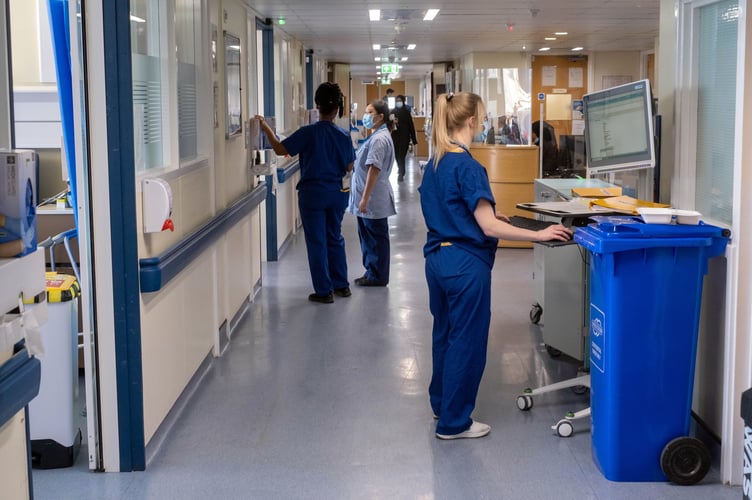More patients than ever in south-east England are reaping the benefits of virtual wards and hospital at home innovations, new data has revealed.
Analysis by NHS England South East shows that in 2024 there were more than 85,000 admissions to virtual wards across the south-east, an 18 per cent increase on 2023.
More than 175,000 patients have been cared for in the south-east since the virtual ward programme began in April 2022, more than in any other region of England.
The data confirmed the region’s commitment to ensuring patients received care in the most appropriate and convenient setting to aid their recovery, with virtual wards enabling patients to be discharged safely and quickly to receive hospital-standard care and monitoring from home.
In the south-east there are more than 2,000 virtual ward beds, with teams of healthcare professionals providing face-to-face and remote care thanks to new technology as the NHS focuses on moving care from hospitals into the community.
Virtual wards have many benefits for patients including improving patient outcomes and improving patients’ experience of healthcare.
They have also been shown to prevent hospital admissions and attendance and provide a cost-effective alternative, meaning hospital beds are available for those who require in-hospital care, helping the NHS respond to continued growing demand.
Dr Shahed Ahmad, NHS England South East’s medical director for system improvement and professional standards, said: “Virtual wards have an important role to play in shifting care from hospitals into the community and supporting the best outcomes for patients.
“We can now provide care for a much greater range and number of patients in their own homes, instead of them needing to be admitted to a hospital.
“We know that by supporting patients to recover at home safely, with home comforts and friends and family close by, they can regain their independence and recover well.
“We are incredibly proud of the world-leading virtual wards across the south-east, with staff doing a brilliant job, using state of the art technology to monitor patients and provide regular check-ins. It’s a fantastic example of the system working together to provide the best outcomes for patients.”
Analysis of the Buckinghamshire, Oxfordshire and Berkshire West Integrated Care Board’s virtual ward and hospital at home programme has shown it has effectively treated thousands of patients, with it significantly reducing the need for emergency services within 28 days of discharge, particularly for older patients.
The programme treats unwell patients with a range of conditions outside the hospital setting, including providing assessments, medication, scans and blood tests where required.
It has also helped reduce emergency admission rates, with these falling by 73 per cent for adults and 85 per cent for children.
Patients across the south-east who have received care within a virtual ward have shared their experiences of receiving care at home via a virtual ward and the benefits.
Elizabeth, 80, was treated on a virtual ward by Frimley Health NHS Foundation Trust after contacting 111 feeling unwell.
The hospital at home team carried out a clinical assessment and diagnosed pneumonia. Elizabeth received intravenous antibiotics and monitoring in her own home and was able to recover at home, avoiding a trip to hospital.
She said: “If you go into hospital at my age you might catch something else. It is much more relaxing at your own home because you can go to bed, have a cup of coffee or whatever whenever you want.’’
Michael received care from the East Sussex virtual ward after calling 999 with breathing difficulties.
He was referred to the virtual ward team, who were able to carry out an assessment and ongoing monitoring, both face to face and remotely, ensuring Michael avoided hospital and could stay at home.
Michael said: “They gave me a blood pressure monitor which was put on my arm and controlled by an iPad. It was completely easy, no problem whatsoever. The other thing is I felt I was in contact all the time, which I was.”





Comments
This article has no comments yet. Be the first to leave a comment.